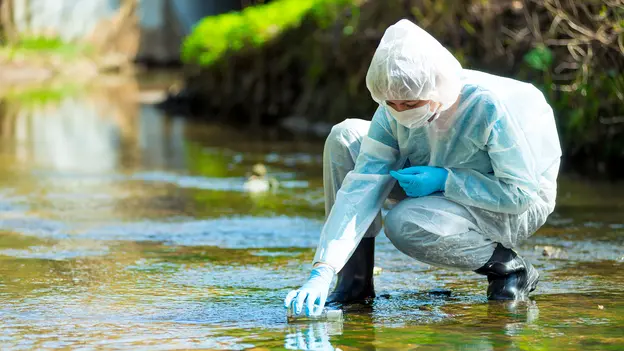Alumni Project
Innovative Materials for Environmental Rehabilitation
Laboratory Study
Climate change is the greatest challenge of our time. Its prevention and slowing down are discussed daily. But what about the destruction that already exists and is getting worse? How can the numerous damages caused by climate change be repaired? Part of the answer could come from our planet itself. Various materials have properties and capabilities that could mitigate or even rehabilitate the negative impacts of environmental pollution.
Studying microporous polymers used for environmental remediation
Various industrial activities pollute the atmosphere and freshwater sources with dyes and carbon dioxide. These substances are not only harmful to humans, but also to nature in general, threatening important biological systems and mechanisms on which humanity depends. In this AGYA project, AGYA alumni Prof. Dr. Bassam Alameddine and Prof. Dr. Samir Lounis plan to develop innovative materials for environmental remediation. New microporous polymers derived from organometallic iron(II) clathrochelate building blocks may be able to remove industrial pollution from the atmosphere and freshwater. Various laboratory tests are being conducted to test the stability and properties of the new, synthesized materials for storing gas and capturing carbon dioxide. The study will be conducted in close cooperation with research groups from Kuwait, USA, and India.
Emphasizing the continuous efforts carried out by AGYA members to develop innovative materials for environmental remediation applications, the project will deepen the research collaborations with Algeria established within the AGYA project ‘Maghrebian-German Partnership on Modelling and Simulations of Physical Properties of Nanomaterials’ conducted in 2020. Together with the AGYA project ‘Development of Silk-based Nanocomposites for Superior Oily Wastewater Separation’ it reinforces AGYA members’ efforts to engage in innovative research, tackling global environmental challenges.
- Disciplines Involved
- Chemistry, Materials Engineering, Physics, Environmental Science
- Cooperation Partners
- Gulf University for Science and Technology, Kuwait
- Forschungszentrum Jülich, Germany
- Kuwait University, Kuwait
- Northwestern University, Illinois, USA
- Indian Institute of Technology Patna, Patna 801106, Bihar, India
- University Mouloud Mammeri, Tizi-Ouzou, Algeria
- University of Bejaia, Algeria
- Project Title
- Iron Clathrochelate-based Polymer Networks: Promising Materials for Environmental Remediation
- Year
- 2022
- Funding Scheme
- Alumni Project
- Countries Involved
- Algeria, Germany, Kuwait, India, United States of America
- AGYA Publication
- Removal of Anionic and Cationic Dyes Using Porous Copolymer Networks Made from a Sonogashira Cross-coupling Reaction of Diethynyl Iron (II) Clathrochelate with Various Arylamines
- Synthesis of Metalorganic Copolymers Containing Various Contorted Units and Iron(II) Clathrochelates with Lateral Butyl Chains: Conspicuous Adsorbents of Lithium Ions and Methylene Blue
- Synthesis of Iron(II) Clathrochelate-Based Poly(vinylene sulfide) with Tetraphenylbenzene Bridging Units and Their Selective Oxidation into Their Corresponding Poly(vinylene sulfone) Copolymers: Promising Materials for Iodine Capture


